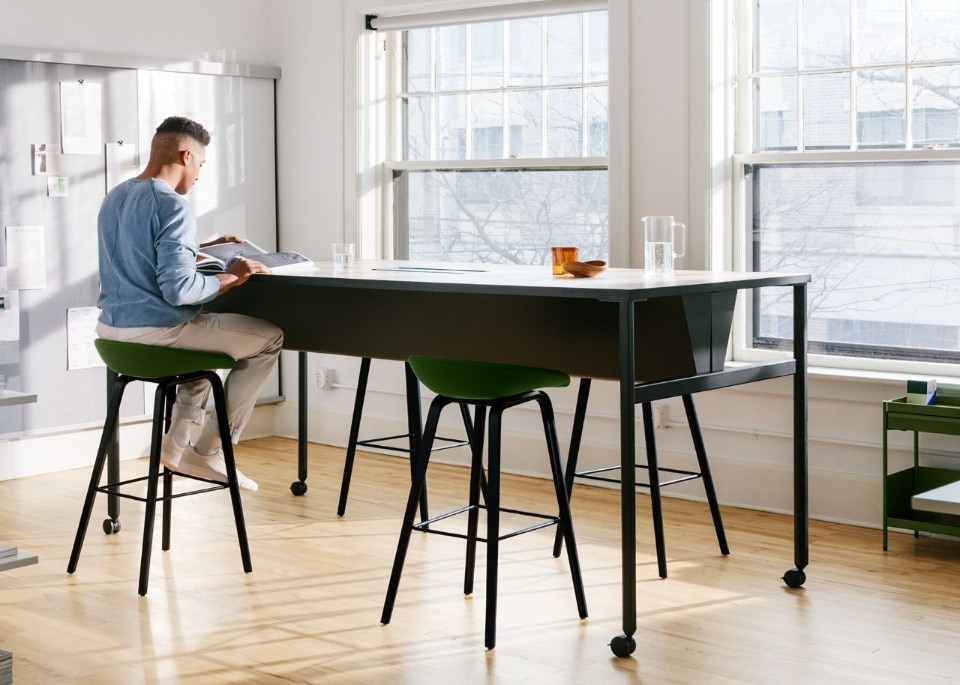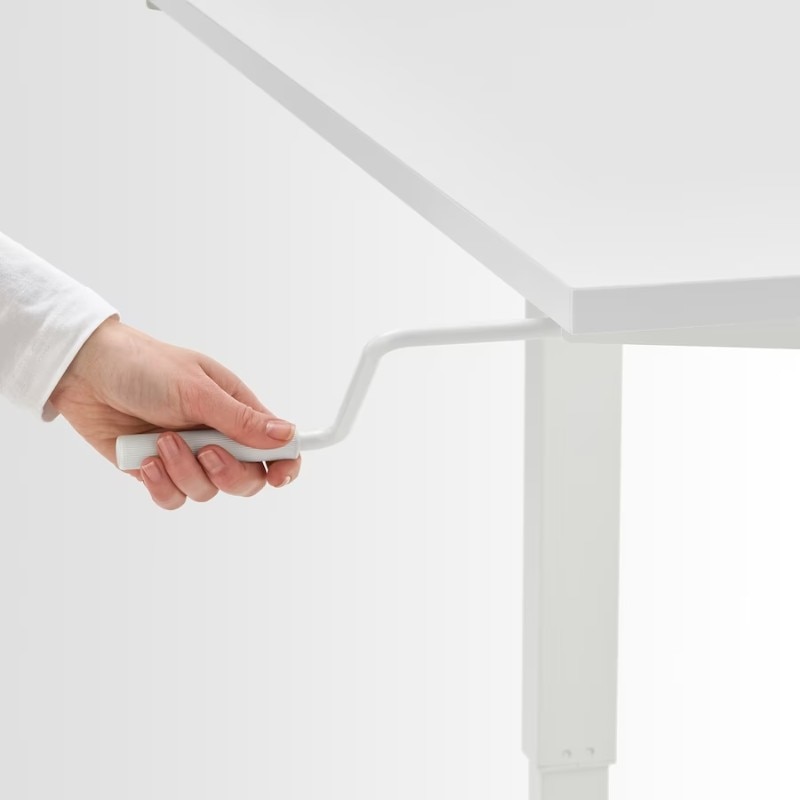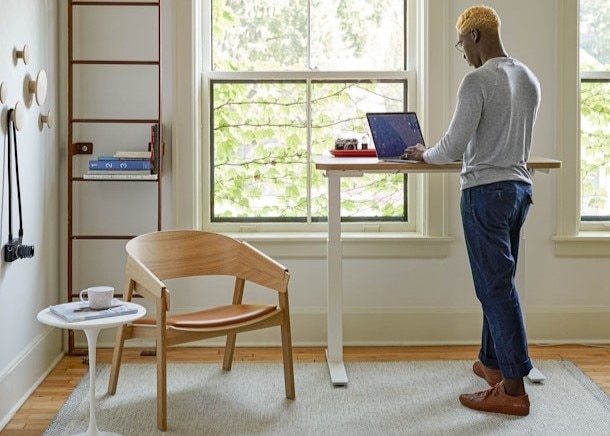The freedom of working however, whenever and wherever we want, following the whim or need of the moment, is now a mantra that more and more employers – those engaging highly specialized resources – are blindly following. In a world that makes flexibility the cornerstone of its effectiveness, working from the office becomes random parameter, untethered from the old "nine to five" ideal. The personal canon overtakes the collective one: this newfound freedom not only redefines working hours but also diminishes the importance of being physically tied to a desk, offering a more individualistic and less conventional and, ultimately, even less bourgeois approach to work.
Standing while working at a table isn't solely a 21st century concept; its widespread adoption only began recently. Historical records reveal that as far back as the Middle Ages, scribes used elevated lecterns, sometimes adopting a standing posture during their writing sessions. Centuries later, drawing tables evolved – from which the late 19th-century drafting table developed. The new adjustable drawing tables could be regulated in height, and standing proved to enhance the movements of the draughtsmen.
The freedom of movement promotes greater creative freedom due to the alignment between physical and mental awareness, contributing to the much-coveted state of flow.
However, contemporary standing desks broke out of specialized professions to encompass a vast majority of white-collar workers, who spend most of their days in front of a computer. The convenience of electronic adjustments contributed to the popularity of these sit and stand desks: whereas in the 1990s the elevation was adjusted through pivot, crank and pneumatic systems, the recent introduction of a push-button panel located under the table makes raising the top quicker and safer – many models are equipped with anti-collision sensors to avoid hitting potential obstacles.

"Working standing is very common in our offices and is a great solution to avoid sitting for too long or having to change workstations," says Alessio Cimmino, Communication Manager at Meta Italia. Although the medical world does not recommend adopting an exclusive standing position, the ergonomic flexibility of the standing desk allows to alternate the two positions, limiting damage caused by prolonged sitting on a chair, including back and shoulder pain, obesity, and cardiovascular disease.
There are also benefits to psychological balance, as shown in a study published in the British Medical Journal in 2018: using a standing desk reduces anxiety and stress factors, and even promotes problem solving. The resulting freedom of movement, according to adherents of personal growth strategies, promotes greater creative freedom due to the alignment between physical and mental awareness, contributing to the much-coveted state of flow.
@thejunglebadger Wfh and workout at the same time! 👩💻 🏃 @flexispotuk #FlexiSpot #FlexiSpotUK #wfh #standingdesk ♬ original sound - Best Online Finds
Amidst its resurgence in popularity, the most common standing desks share a common design: the telescopic leg sled base stands out as the primary choice. Despite this trend, major office furniture brands, barring a few notable American exceptions like Herman Miller and Knoll, haven't fully embraced these designs. Instead, specialized companies focusing on functional performance dominate the standing desk market, prioritizing function over material, upholstery, and finishes. Lower-cost options found online often align with other ergonomic solutions appealing to similar purchase considerations, including desk converters, which are raised mini-desks that substitute proper standing desks, wrist cushions, and ball seats. DIY alternatives, such as using an ironing board as a makeshift surface, also circulate widely on platforms like YouTube.

Standing desks found their place not only in residential home offices but also in corporate environments. Companies in Anglo-Saxon and Asian regions are particularly open to this solution. Foster + Partners' visionary office towers in Shenzhen, designed for the renowned drone and videography company Dji, epitomize this evolution. Here, technology takes over, elevating desks to smart furniture that promotes healthy employee habits. Dji's custom-designed standing desks go beyond the standard, featuring an innovative addition: a built-in bed that extends onto the floor, complemented by a small mattress if needed. This unique design not only enhances work flexibility but also bridges the gap between work and personal time – that of rest. This suggests that the pursuit of well-being in the workplace isn't merely about encouraging short naps but establishing a stronger link between flexibility and productivity. This paradigm shift pushes for extended stays in the workplace, redefining the traditional boundaries between work and personal life.
Opening image: Courtesy Knoll


